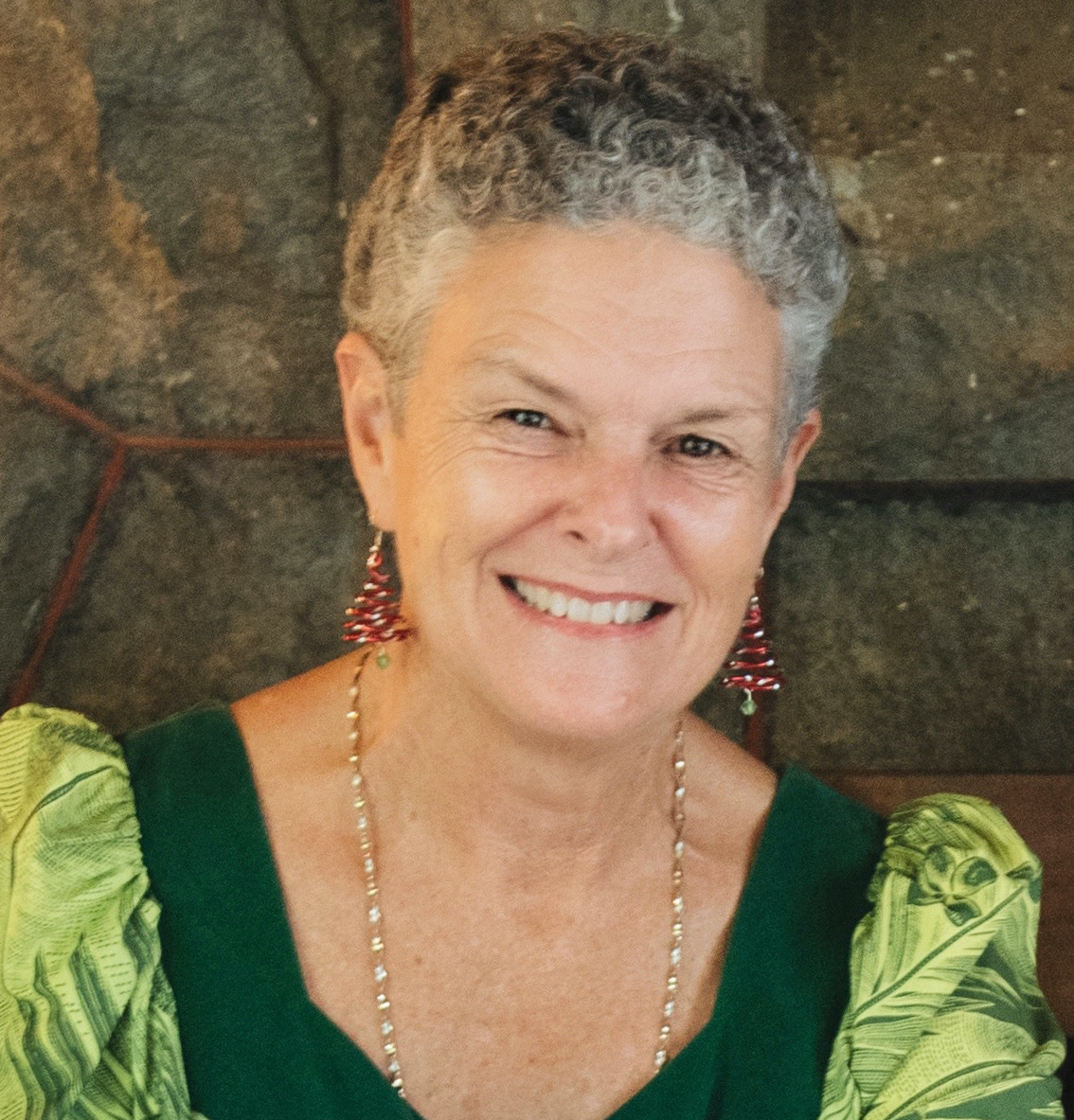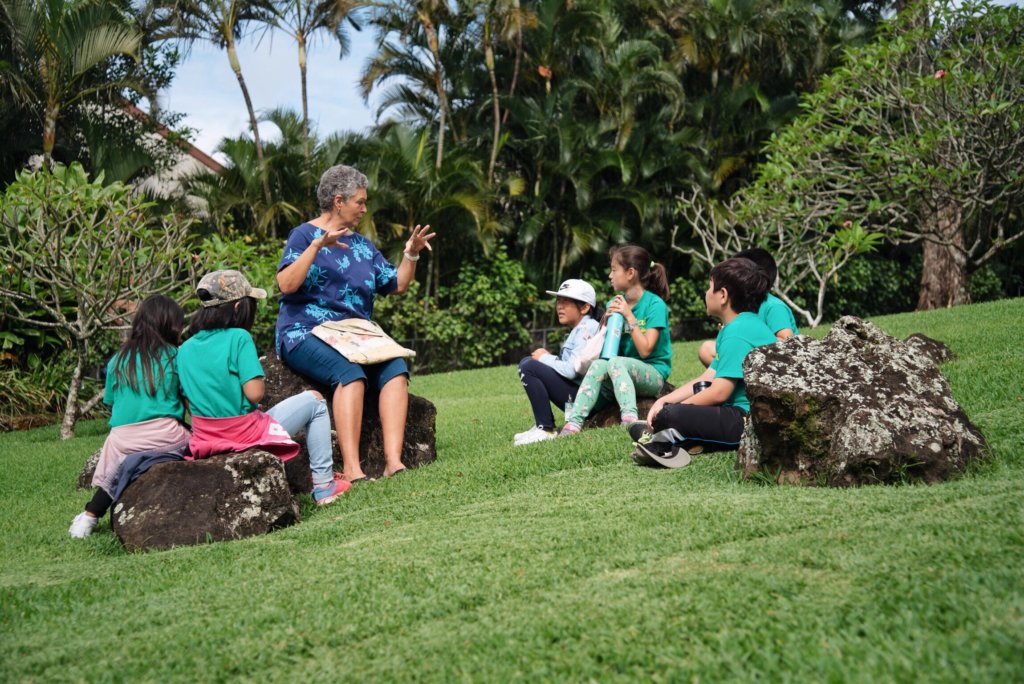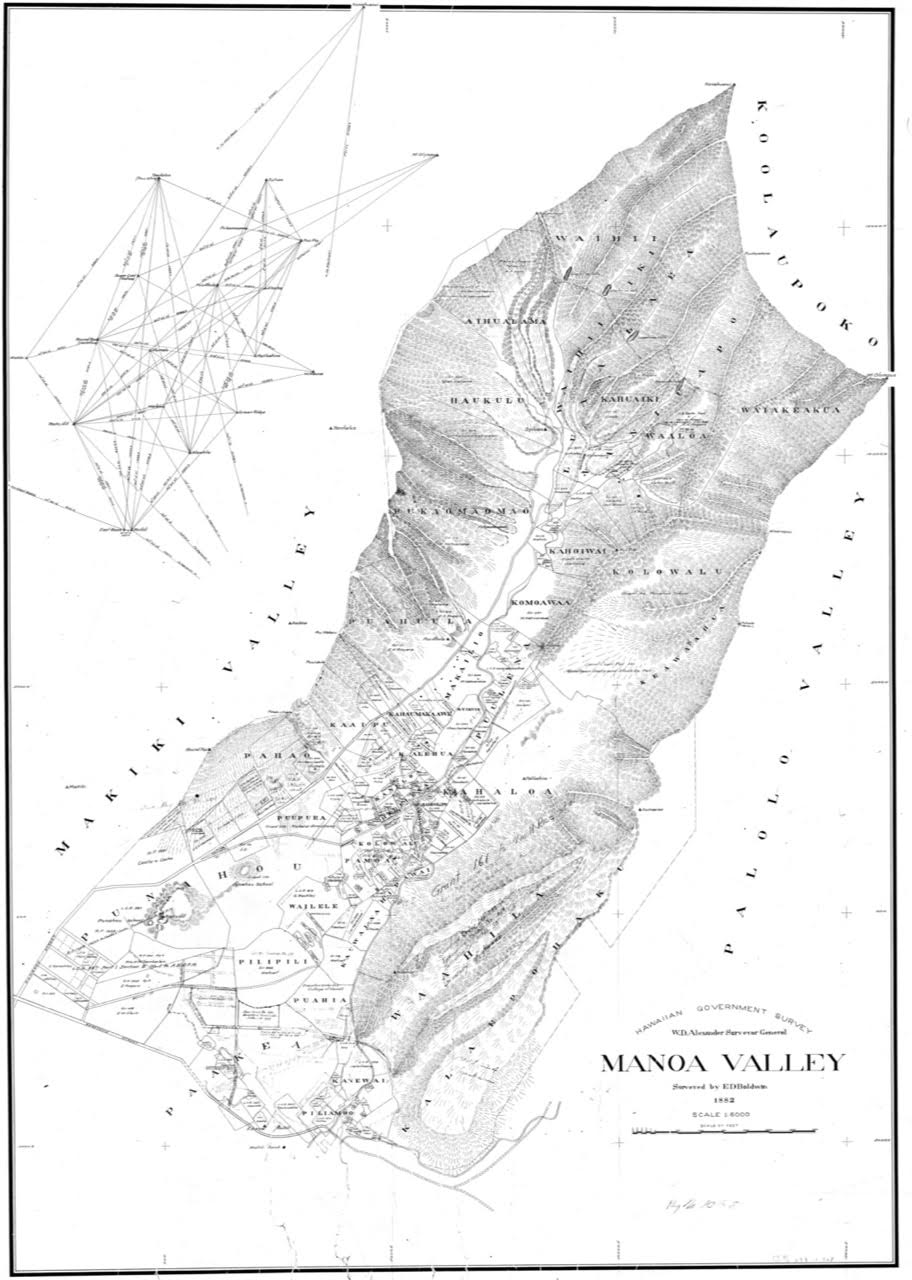Through the Eyes of a Citizen Historian
 By Andrea Wagner
By Andrea Wagner
Born and raised in Wailupe Valley, Andrea Wagner is a dedicated MHC volunteer extraordinaire—not only does she give tours to student and adult visitors, she volunteers to help process our newsletters, registers guests at events, and as a lifelong learner and citizen historian, jumped at the opportunity to dive a little deeper into the history of Mānoa Valley.
Dad was a historian who loved the stories of humans through time and instilled in me a respect for and insistence on honesty in considering history—and people. My first “aha” moment in history came when we were on sabbatical on the east coast in 1962-63. Mom and dad made sure we experienced and explored what the east coast had to offer—including its rich historical background. One trip was a car camping drive from Arlington Virginia, to Cape Hatteras, North Carolina. I remember looking out the window along the way and wondering at the ravined landscape. Wonder turned to awe when dad explained that those ravines were actually trenches dating from the Revolutionary War. Seeing those trenches gave life to dull data-driven history lessons, bringing history alive with real, fascinating people and events!

My first formal exercise in historical research (beyond helping dad do research for his texts or prepare my college papers) came in college when I was asked to gather historical information on Pu’uokapolei. The State was considering options for the site, which was then a nondescript hillock in the middle of old sugar lands. I was given a tour and told of Puʻuokapolei’s military use in World War II when it was converted into a gun emplacement similar to Diamond Head, but much smaller, and of interest in preserving the area as a living history site. My research following that tour included several visits to the State Archives, where I explored the changes on the Ewa plain as lands moved from one hand to another. The experience was fascinating as I traced casual land transfers between individuals, sparking an ongoing interest in human and land interactions.
In August 2019, a casual conversation turned into a nine-month project to index oral histories originally collected as interviews for “Mānoa: The Story of a Valley.” Indexing the oral histories was a challenge as there were no firm guidelines. A desire was expressed for an index of each oral history to help researchers access topics of interest more easily. After mulling over that desire for a while, I set to work on the assumption that the oral histories related to Mānoa and that the primary interest of readers would be Mānoa Valley. Therefore, my first approach was to set up an Excel spreadsheet of topics and interviewees so that information could be identified within each history as well as across histories. This would have been fine had it not become obvious that the interviews were from a diverse group of individuals with memories of places and events well beyond Mānoa Valley, and that simple spreadsheet had become a monster. Of course, I was halfway through indexing the interviews before realizing that I needed to come up with something better. After a few weeks’ musings led me to the realization that each history should be taken on its own merits, with topics common to most histories used as a basic format for individual indexes. Off I went again, working through histories more easily at first…until I became aware that some items passed over at first were actually noteworthy. A little back and forth updating of indexes and I was on my way again.

So, what did I learn from those histories? Each interview provided fascinating insights into late 19th- and early 20th-century Mānoa and Hawaiʻi. Multiple stories about the Castle home and family, the Woolsey poi factory, the cement pond in Mānoa stream, the Japanese movies, the Mānoa dairies, the trolley, homesteading on Maui, travels abroad, and so much more. Multiple interviews with Beatrice Krauss were of particular interest not just for the human aspect (such as traveling third class around the world and visits to Europe, Russia, and Japan before and after World War II), but for their fascinating firsthand views of world history as it happened. Discussions of the attack on Pearl Harbor and martial law were instructive, as were homesteading on Maui and residential development of Mānoa.
Now that this project has wrapped up, I search for new opportunities. Biographies and historical accounts are stacked up next to my bed and on our coffee table, waiting for exploration. The past beckons to inform the present and future!
The Mānoa oral histories that Andrea worked with were spearheaded by ethnobotanist Beatrice Krauss in 1978 along with a group of like-minded Mānoa residents who met monthly to do research and interview the kupuna of Mānoa, many of whom were born around the time of the early 20th century. Those interviews would later become the basis for the book “Mānoa: The Story of a Valley,” published in 1994. When Mālama Mānoa was founded in 1992, they encouraged and assisted with the process of the book, and proceeds from it went to establish the Mālama o Mānoa (it’s original name, the o was eventually dropped) Educational Endowment. Mary Cooke was a charter president of Mālama o Mānoa, which led to the transcripts being stored at MHC on behalf of Mālama Mānoa until they were scanned and shared back to the organization in 2017-18. You can read some of the oral history transcripts at Mālama Mānoa here.
